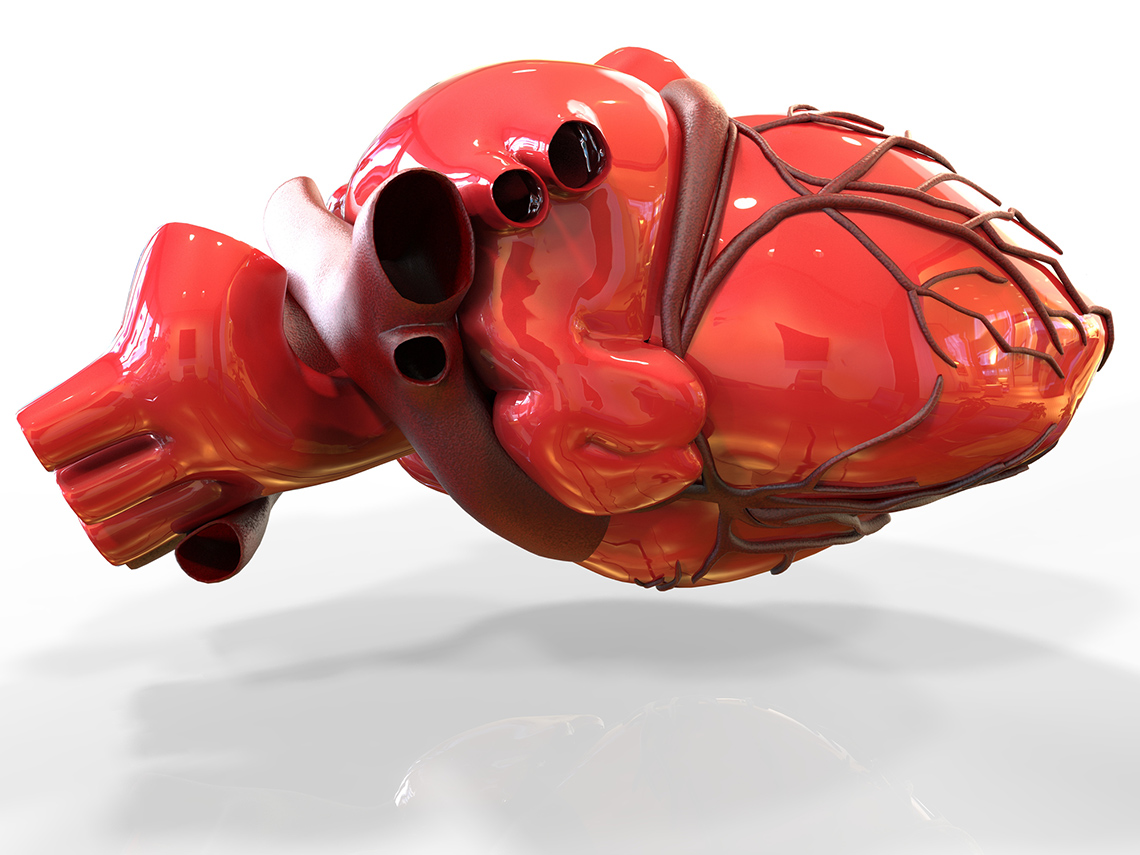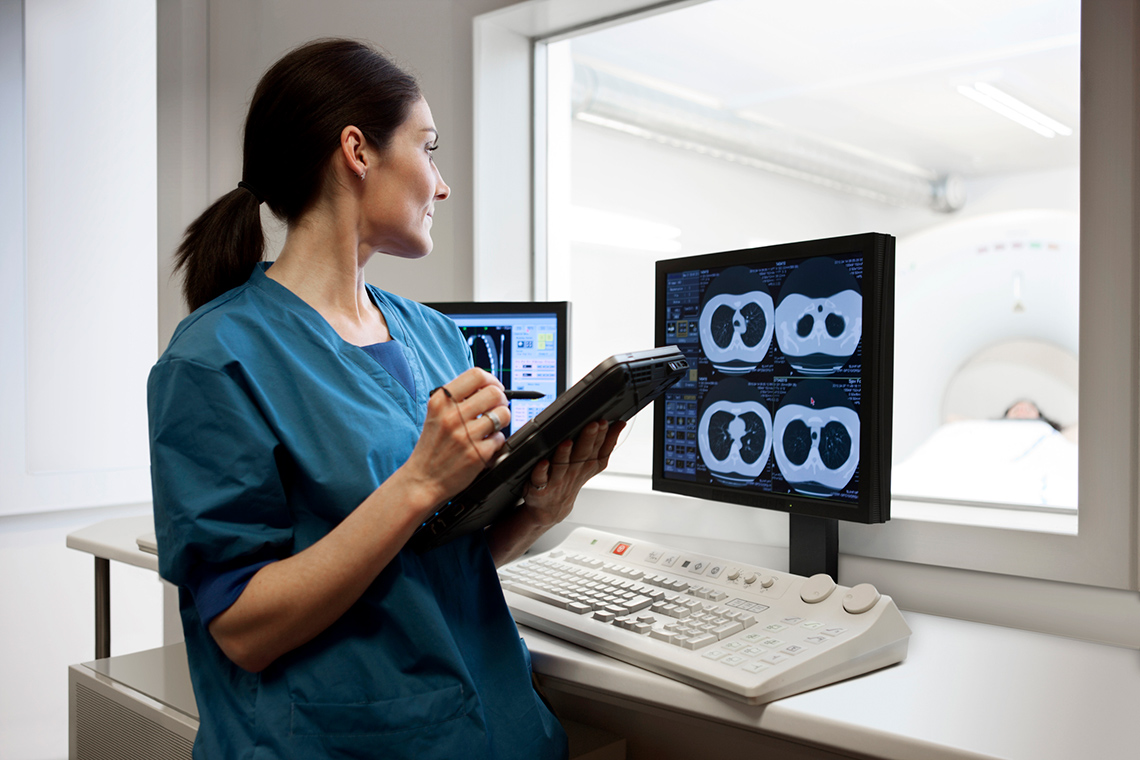Minds On
The human body
Explore the following image of the levels of organization in the human body and consider the following questions.
How does this image describe the basic organization of the human body?
What do you notice about the progression from cell to organism?
Why might it be important to understand the levels of organization in the human body?
Record your responses using a method of your choice.

Levels of organization. The first level includes the cell, level 2 is the tissue, level three is the organ, level four is the organ system and level five is the organism.
Action
Cells and the human body

Levels of organization. The first level includes the cell, level 2 is the tissue, level three is the organ, level four is the organ system and level five is the organism.
Humans are multicellular organisms which means that they are composed of many cells.
There are five levels of organization for multicellular organisms. These are cells, tissue, organs, organ systems, and organisms.
Press the following tabs to access definitions for each level of multicellular organisms.
The cell is the basic unit of the structure and function in all living things.
A cluster of specialized cells is known as tissue. An organ is made up of different kinds of tissues that join together to form a part of an organism that has a specific task.
In an organism, the organ structure is made of two or more different tissues which have specialized functions, such as the lungs or heart.
A group of organs that work together to complete a specific job, such as the digestive or nervous system.
An organism is a living thing.
It is important to understand the levels of organization from cell to organism so that we can recognize how each build upon each other. A cell is the most basic unit which when grouped with similar cells creates tissues. Groups of tissues create organs. Groups of organs form organ systems. All of these combined are what make up an organism.
Let’s learn about the organ systems that help the human body function in different ways.
There are eleven major organ systems in the human body:
- circulatory
- digestive
- endocrine
- excretory
- integumentary
- immune
- muscular
- nervous
- reproductive
- respiratory
- skeletal
We will focus on six of these organ systems.
Explore the following carousel of images that describe the circulatory system, nervous system, respiratory system, skeletal system, digestive system, and muscular system.
A carousel of six images. Image 1: This image of the circulatory system highlights the veins, capillaries and arteries that travel throughout the body from head to toe, including the arms and legs. These are represented as long red and blue tubes. The heart is also shown in this image and the veins and arteries that extend from the heart. Image 2: This image of the nervous system highlights the brain, spinal cord travelling down the back, nerves which are represented as threads travelling throughout the body from head to toe, including arms and hands. The brain is represented as a large oval shaped object at the top half of the head. Image 3: This image of the respiratory system highlights the nose and mouth area of the head, the nasal cavity and trachea which is a tube connecting the nose and mouth highlights to the two lungs which are oval shaped objects in the chest area of the body. Image 4: This image of the skeletal system highlights the skeleton inside the body. It includes the skull the spinal cord extending from the skull to the pelvis which is two bones at the bottom of the torso. There are bones extending from the chest on both sides of the body to the shoulders, then down the arms into the hands and fingers. There are also bones extending from the pelvis on each side down the legs into the feet and toes. Image 5: This image of the digestive system highlights the mouth area as a circle, then a tubular esophagus running down to the stomach, and tubular shaped small intestines, large intestines. Image 6: This image of the muscular system highlights the muscles as long, thin and thick lines throughout the entire body, from head to toes and hands.
Organ systems work together to keep you healthy, and they are all important! There are so many ways that each of the major organ systems are important.
For example, the circulatory system carries your blood throughout your body, giving you oxygen (which you need) and removing carbon dioxide (which your body needs to get rid of).
Another example of the numerous ways the organ system is important is the immune system (also called lymphatic system) which helps your body fight against viruses and bacteria. The list goes on!
Test your prior knowledge! For each organ, select the corresponding organ system.
Research task: interdependence
What do you think these organ systems have in common?
Do you think one system could work without the other? Why or why not?
All the cells in the body have the same basic needs. They need energy, nutrients, oxygen, and removal of harmful wastes to survive. Body systems work together to provide cells with what they need.
Interdependence means the state of being dependent upon one another or unable to function without each other.
First, choose one of the following pairings of human organ systems. Then, create a visual (diagram), written, or detailed audio description that demonstrates how you think these two organ systems are connected and interdependent on each other.
- Circulatory and Respiratory System
- Digestive and Circulatory System
- Nervous and Muscular System
Be sure to include how these two systems function together and identify what would happen to one without the other. Your diagram should include both pictures and words (or an audio recording explaining your diagram) and can be created in print or digitally.
Use the following information as a guide. You may also reference other sources.
Before beginning your research, explore this video that explains the scientific research process. This will help guide you as you work your way through this activity.
Explore this video to learn about the steps of the Scientific Research Process.
Press the following tabs to check your research.

The circulatory system consists of the heart, arteries, veins, and capillaries. The function of the circulatory system is to transport blood, nutrients, gases, and wastes.
This image of the circulatory system highlights the veins, capillaries and arteries that travel throughout the body from head to toe, including the arms and legs. These are represented as long red and blue tubes. The heart is also shown in this image and the veins and arteries that extend from the heart.

The respiratory system consists of the nasal cavity, trachea, and lungs. The function of the respiratory system is to control breathing, and exchange gases in lungs and tissues.
This image of the respiratory system highlights the nose and mouth area of the head, the nasal cavity and trachea which is a tube connecting the nose and mouth highlights to the two lungs which are oval shaped objects in the chest area of the body.
The respiratory system is made up of the nose, mouth, nasal cavity and windpipe (trachea), and the lungs. The lungs are the major organ of the respiratory system. When someone breathes in through their nose and mouth, oxygen is passed through their windpipe to their lungs. The inner surface of the lungs contains blood vessels. Oxygen is passed to through the blood vessels and then transported throughout the body.
The major organ of the circulatory system is the heart. It pumps blood into the lungs and throughout the body. Blood carries carrying oxygen to cells throughout the body. At the same time, it collects carbon dioxide (a waste product). The carbon dioxide is then transported through the blood back to the lungs and is released from the lungs every time that someone breathes out.

The digestive system consists of the mouth, esophagus, stomach, small intestine, large intestine, liver, gall bladder, and pancreas. The function of the digestive system is to take in and break down food, absorb nutrients, and eliminate solid waste.
This image of the digestive system highlights the mouth area as a circle, then a tubular esophagus running down to the stomach, and tubular shaped small intestines, large intestines.

The circulatory system consists of the heart, arteries, veins, and capillaries. The function of the circulatory system is to transport blood, nutrients, gases, and wastes.
This image of the circulatory system highlights the veins, capillaries and arteries that travel throughout the body from head to toe, including the arms and legs. These are represented as long red and blue tubes. The heart is also shown in this image and the veins and arteries that extend from the heart.
When someone eats, food is passed through the mouth, down the esophagus and into the stomach. After food is broken down in the stomach, it passes through the small intestine to be digested. The walls of the small intestine contain many blood vessels. The small intestine continues to break down food into very small particles called nutrients.
These nutrients (molecules) pass through the intestine walls and then enter the blood. Once in the blood, these nutrients are transported to the body cells, where it is used to provide the cell with the materials and energy.

The nervous system consists of the brain, spinal cord, nerves, and sense organs. The function of the nervous system is to detect changes in the environment and signals these changes to the body which then carries out a response.
This image of the nervous system highlights the brain, spinal cord travelling down the back, nerves which are represented as threads travelling throughout the body from head to toe, including arms and hands. The brain is represented as a large oval shaped object at the top half of the head.

The muscular system consists of muscles attached to bones throughout the body. The function of the muscular system is to work with the bones to move body parts.
This image of the muscular system highlights the muscles as long, thin and thick lines throughout the entire body, from head to toes and hands.
The nervous system reads signals from outside and inside the body. Depending on the type of signal, the nervous system may cause the body to react in a particular way. Usually, the reaction or change that happens involves the muscular system.
For example, when it is cold, the nervous system causes muscles to contract and relax rapidly. This is experienced as shivering.
The role of technology
What happens when there is a problem with an important organ in the body?
Scientists have worked on various solutions to support organ systems and/or replace unhealthy organs using technology. Two examples of these kinds of innovations are the insulin pump and the artificial heart.
Explore these in further detail using the following information and respond to the questions provided. You may record your responses using a method of your choice.
Reading Time
Current technology: the insulin pump

Insulin is a hormone created naturally by an organ located behind the stomach called the pancreas. Insulin is released from the pancreas into the bloodstream so that it can reach different parts of the body.
It functions in many different ways, but mainly controls how the body uses carbohydrates found in certain types of food. Carbohydrates are broken down into glucose (simple sugars). Insulin allows cells in the muscles, liver and fat to take this glucose and use it as a source of energy so they each can work properly. Without insulin, cells are not able to use glucose as fuel and cannot function properly.
There is a solution for when the body does not produce enough, or produces too much, insulin. Initially, insulin injections were used to give the body insulin. However, these someone would need multiple injections throughout the day to keep up their insulin levels.
As an alternative to the usual insulin injections, insulin pumps have been created by scientists. The insulin pump works to keep blood sugar levels in a safe range. An insulin pump provides continuous amounts of short acting insulin all day long and replaces the need for multiple daily injections.
Future technology: the artificial heart

If a person experiences heart failure, it means that the heart can no longer pump blood properly. Since the circulatory system depends on the heart to pump blood throughout the body, heart failure may require someone to get a heart transplant. A heart transplant is not always possible, and in order to create a solution scientist have been working on developing an artificial heart.
An artificial heart would work similarly to a real heart. It would create blood flow that as close as possible to a natural pulse. It would push blood to the lungs to collect oxygen and carry it through the rest of the body.
The artificial heart is still being researched and developed by scientists so that it can fit safely in all bodies, use minimal parts and last a long time.
Which organ systems does an artificial heart interact with?
Which organ systems does the insulin interact with?
Press ‘Answer’ to access which organ systems the artificial heart and insulin interacts with.
An artificial heart interacts with the circulatory system (blood, heart) and the respiratory system (oxygen).
Insulin interacts with the digestive system (pancreas) and the circulatory system (blood).
Based on the information you have explored, consider the following questions.
Why is insulin pump technology a useful innovation?
Why might artificial heart research be important?
Record your ideas using a method of your choice.
Careers in cells and body systems
Now that we have explored the organization of the human body and the function of the organ systems, consider who might need to use this information in their job.
Brainstorm different types of careers that might require:
- understanding the five levels of organization for multicellular organisms
- understanding the major organ systems in the human body and how they work together
- using and/or developing technology to support different organ systems
Record your ideas using a method of your choice.
Consolidation
Careers in cells and body systems

For the last section of this learning activity, you will be independently exploring careers in cell biology. Some examples of careers that deal directly or indirectly with the health of human organ systems are:
- biomedical engineer
- cellular biologist
- epidemiologist
- lab and x-ray technicians
- nutritionists
- physiotherapists
Choose one of these careers to explore further, then record your findings using a method of your choice. It should include:
- a job description (What do they do?)
- the human organ and organ systems they work with
- the education needed to obtain a career in this field
- visuals
You may use the following checklists to guide your findings.
1. I can choose resources by
2. I can record information by
Once you have completed your research, you may share with a partner, if possible.
Making connections
Was there anything surprising that you discovered in your research?
What might some important areas of scientific research and innovation for human organ systems?
Reflection
As you read the following descriptions, select the one that best describes your current understanding of the learning in this activity. Press the corresponding button once you have made your choice.
I feel…
Now, expand on your ideas by recording your thoughts using a voice recorder, speech-to-text, or writing tool.
When you review your notes on this learning activity later, reflect on whether you would select a different description based on your further review of the material in this learning activity.





